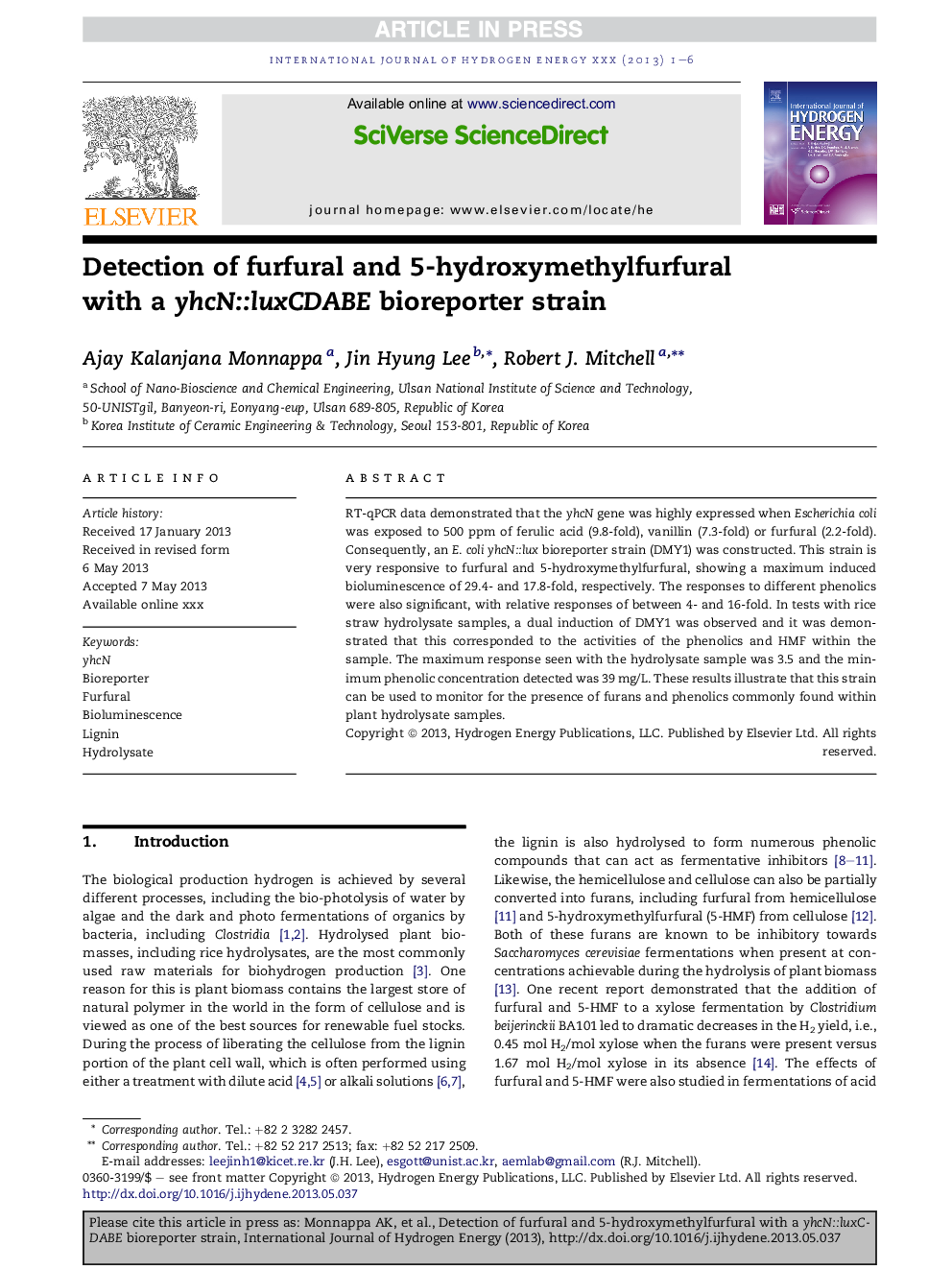| Article ID | Journal | Published Year | Pages | File Type |
|---|---|---|---|---|
| 7721713 | International Journal of Hydrogen Energy | 2013 | 6 Pages |
Abstract
RT-qPCR data demonstrated that the yhcN gene was highly expressed when Escherichia coli was exposed to 500Â ppm of ferulic acid (9.8-fold), vanillin (7.3-fold) or furfural (2.2-fold). Consequently, an E. coli yhcN::lux bioreporter strain (DMY1) was constructed. This strain is very responsive to furfural and 5-hydroxymethylfurfural, showing a maximum induced bioluminescence of 29.4- and 17.8-fold, respectively. The responses to different phenolics were also significant, with relative responses of between 4- and 16-fold. In tests with rice straw hydrolysate samples, a dual induction of DMY1 was observed and it was demonstrated that this corresponded to the activities of the phenolics and HMF within the sample. The maximum response seen with the hydrolysate sample was 3.5 and the minimum phenolic concentration detected was 39Â mg/L. These results illustrate that this strain can be used to monitor for the presence of furans and phenolics commonly found within plant hydrolysate samples.
Related Topics
Physical Sciences and Engineering
Chemistry
Electrochemistry
Authors
Ajay Kalanjana Monnappa, Jin Hyung Lee, Robert J. Mitchell,
